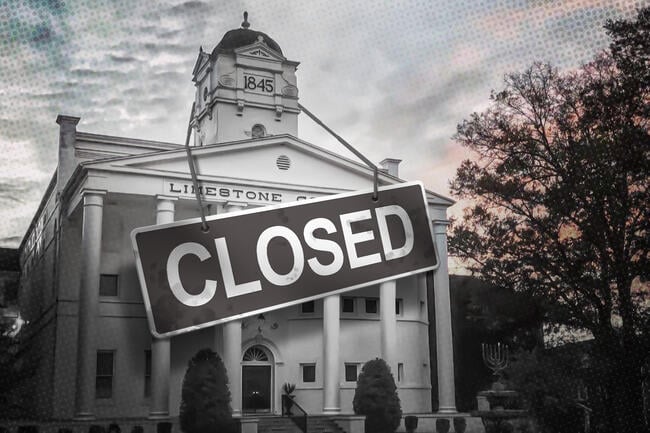You have /5 articles left.
Sign up for a free account or log in.

Photo illustration by Justin Morrison/Inside Higher Ed | InFocus Productions/Wikimedia Commons
Limestone University survived the Civil War and the Great Depression, but protracted financial struggles have proven harder to overcome: After nearly 180 years, Limestone will cease operations next week.
Officials announced the closure Tuesday night.
“Words cannot fully express the sorrow we feel in having to share this news,” Limestone president Nathan Copeland said in a statement. “Our students, alumni, faculty, staff, and supporters fought tirelessly to save this historic institution. While the outcome is not what we hoped for, we are forever grateful for the passion, loyalty, and prayers of our Saints family.”
The move follows a tumultuous period for the university. After years of financial challenges, the Board of Trustees was set to decide last week on whether to shift to online-only operations or close altogether. At the last minute it decided to hold off on the decision because a “possible funding source” had emerged.
Limestone was seeking a $6 million infusion to help facilitate the shift to a fully online model. Though the university was able to secure $2.1 million in pledged commitments from almost 200 donors, according to the closure announcement, it ultimately fell well short of the goal, prompting the board to close the private institution in South Carolina.
Now 478 employees will lose their jobs.
The closure comes on the heels of significant enrollment and financial losses. The university enrolled 3,214 students in fall 2014, according to federal data; Limestone recently noted enrollment at around 1,600.
It has also operated for years with substantial budget deficits. The latest audit for the university noted “significant doubt” about Limestone’s ability to remain open, given that it had “suffered recurring significant negative changes in net assets and cash flows from operations” and had “a net deficiency in [unrestricted] net assets.”
Limestone’s board also borrowed heavily from the university’s meager endowment in recent years.
In 2023, the South Carolina attorney general agreed to lift restrictions on Limestone’s endowment to allow the board to increase spending from those funds. As a result, the endowment collapsed in value, falling from $31.5 million at the beginning of fiscal year 2022 to $12.6 million at the end of FY23. Auditors noted that “all endowment funds are underwater” as of last June.
Auditors also expressed skepticism that Limestone would be able to pay off mounting debts.
The university had more than $30 million in outstanding debt in the last fiscal year, including $27.2 million owed to the U.S. Department of Agriculture. Limestone’s latest audit shows the university listed its buildings and land as collateral for both the U.S. Department of Agriculture and another bank loan.
Auditors also found that Limestone’s “internal controls over financial reporting are informal and lack formal documentation,” and that the university’s accounting department was understaffed.
Despite the abrupt nature of the closure, Limestone officials wrote in Tuesday’s announcement that the university “will proceed with an orderly wind-down process” and help students transfer to other institutions and support faculty and staff with more information to come on those efforts.
Limestone will hold its final commencement on Saturday.
“Our Limestone spirit will endure through the lives of our students and alumni who carry it forward into the world,” Limestone board chair Randall Richardson said in the closure announcement. “Though our doors may close, the impact of Limestone University will live on.”
The closure announcement comes less than a week after St. Andrews University, a private institution in North Carolina, made a similar decision to cease operations due to fiscal issues.




